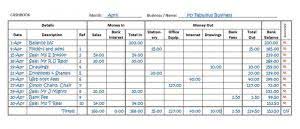
The resulting contribution dollars can be used to cover fixed costs (such as rent), and once those are covered, any excess is considered earnings. Contribution margin (presented as a % or in absolute dollars) can be presented as the total amount, amount for each product line, amount per unit, or as a ratio or percentage of net sales. You might wonder why a company would trade variable costs for fixed costs.

Contribution margin compared to gross profit margin
A positive contribution margin means the product price is able to offset variable cost expenses and contribute to fixed cost expenses and profits. A negative margin depletes profits and requires that price be adjusted to combat this, if not pulling the product completely. Contribution margin analysis is used to compare the cash generated by individual products and services.
Table of Contents
Every product that a company manufactures or every service a company provides will have a unique contribution margin per unit. In these examples, the contribution margin per unit was calculated in dollars per unit, but another way to calculate contribution margin is as a ratio (percentage). The contribution margin subtracts the variable costs for producing a single product from revenue. The contribution margin measures the profitability of individual items that a company makes and sells. This margin reviews the variable costs included in the production cost and a per-item profit metric, whereas gross margin is a company’s total profit metric. The difference between fixed and variable costs has to do with their correlation to the production levels of a company.
What is a Contribution Margin and How Do You Calculate It?

Yes, the contribution margin will be equal to or higher than the gross margin because the gross margin includes fixed overhead costs. The contribution margin excludes fixed costs, so the expenses to calculate the contribution margin will likely always be less than the gross margin. The contribution margin ratio is expressed as a percentage, but companies may calculate the dollar amount of the contribution margin to understand the per-dollar amount attributable to fixed costs. You may need to use the contribution margin formula for your company’s net income statements, net sales or net profit sheets, gross margin, cash flow, and other financial statements or financial ratios. Similarly, we can then calculate the variable cost per unit by dividing the total variable costs by the number of products sold.

What is the contribution margin ratio formula?

And many e-commerce platforms have enough accounting systems built-in to give you the numbers you need. But it’s still valuable to understand what’s behind the numbers and how you can use them to optimize your decision making. A product’s profit contribution can be forecast across the entire life cycle of a product, helping businesses plan for sustained success and extend the life cycle of their business.
How do companies use contribution margin?
This is the only real way to determine whether your company is profitable in the short and long term and if you need to make widespread changes to your profit models. Fixed costs usually stay the same no matter how many units you create or sell. The fixed costs for a contribution margin equation become a smaller percentage of each unit’s cost as you make or sell more of those units. To calculate the contribution margin, we must deduct the variable cost per unit from the price per unit.

In addition, although fixed costs are riskier because they exist regardless of the sales level, once those fixed costs are met, profits grow. All of these new trends result in changes in the composition of fixed and variable costs for a company contribution margin income statement and it is this composition that helps determine a company’s profit. This demonstrates that, for every Cardinal model they sell, they will have \(\$60\) to contribute toward covering fixed costs and, if there is any left, toward profit.
Gross profit margin is the difference between your sales revenue and the cost of goods sold. Crucial to understanding contribution margin are fixed costs and variable costs. To run a company successfully, you need to know everything about your business, including its financials. One of the most critical financial metrics to grasp is the contribution margin, which can help you determine how much money you’ll make by selling specific products or services. Yes, it means there is more money left over after paying variable costs for paying fixed costs and eventually contributing to profits.
- The contribution margin can help company management select from among several possible products that compete to use the same set of manufacturing resources.
- With that all being said, it is quite obvious why it is worth learning the contribution margin formula.
- For this section of the exercise, the key takeaway is that the CM requires matching the revenue from the sale of a specific product line, along with coinciding variable costs for that particular product.
- The Ascent, a Motley Fool service, does not cover all offers on the market.
- Our mission is to empower readers with the most factual and reliable financial information possible to help them make informed decisions for their individual needs.
- Our goal is to deliver the most understandable and comprehensive explanations of financial topics using simple writing complemented by helpful graphics and animation videos.
Get in Touch With a Financial Advisor
We put together a list of the best, most profitable small business ideas for entrepreneurs to pursue in 2024. A financial professional will offer guidance based on the information provided and offer a no-obligation call to better understand your situation. Our mission is to empower readers with the most factual and reliable financial information possible to help them make informed decisions for their individual needs. Our writing and editorial staff are a team of experts holding advanced financial designations and have written for most major financial media publications.



